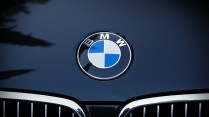Experts Advice How to Smoothly Drive EV in Cold Weather
By Dabbie Davis
Jan 18, 2024 04:23 AM EST

During the severe cold spell this January 2024, spanning from Chicago to northern Texas, electric vehicle (EV) owners faced considerable challenges. EV driving range was reduced and charging station wait times increased due to the severe winter weather. These are only some vehicle issues brought about the freezing temperatures.
What Experts Say, Start at Home: Precondition, Plan, and Charge
In Oak Brook, Illinois, near Chicago, television journalists discovered Teslas in queues at a Supercharger station, perilously close to running out of power as temperatures plummeted to a bone-chilling minus 9 Fahrenheit. As freezing temperatures, ice, and snow swept across the United States, the instinctive response before embarking on a journey might involve warming up a vehicle.
Reports gave light on what to do with EV to make sure their car starts in freezing temperatures. It is a fact that driving EVs smoothly becomes challenging as they can experience a significant reduction in travel range, ranging from 10% to 36%. Additionally, EVs face slower charging times in extreme cold, with some Tesla owners near Chicago encountering charging difficulties.
Despite the cold weather posing challenges not only for EVs but also for traditional gasoline and diesel vehicles, experts assert that with proper planning and minor adjustments, EV owners can ensure their cars start in freezing temperatures and continue to travel relatively unaffected.
According to USA Today, experts acknowledge cold weather challenges for EVs and conventional vehicles. They recommend not idling to warm up the engine in the cold. David Bennett from AAA advises starting the vehicle, fastening the seatbelt, and driving normally for efficient warming.
- Scraping ice and using defrosters are recommended in icy conditions.
- Bennett suggests checking various car parts and tire pressure in winter.
- AAA recommends starting and driving your car for at least 30 minutes weekly to maintain the battery's life.
READ MORE: Tesla Supercharging Stations in Oak Brook Faces Frigid Weather, Owners Experience Disaster
Additional car safety tips for winter include checking the battery, avoiding using the vehicle to charge devices, maintaining headlights and wiper blades, and being cautious with cruise control and lane changes in icy conditions.
JD Power's Tips
J.D. Power suggests the following techniques to assist your vehicle's battery in initiating in cold conditions:
- Warm up the battery by briefly activating the high beams for 20 to 30 seconds.
- Engage the ignition, allowing a few seconds for the fuel pump to activate if the car is equipped with an injector.
- If the vehicle lacks an automatic choke in the carburetor, manually pull the lever.
- For cars with manual transmissions, depress the clutch pedal before attempting to start the engine.
- Make sure not to attempt starting the car for more than 10 to 15 seconds to prevent overheating. If it doesn't start, wait a minute before trying again.
- If the starter operates normally but the car still doesn't start after three attempts, consider pressing the gas pedal and repeating the process.
- If the starter remains inactive, it may indicate a dead battery or a malfunctioning starter.
Finally, to maintain your car's overall performance during the winter, AAA recommends checking antifreeze, batteries, tire pressure, lights, wiper blades, and fluid levels.
RELATED ARTICLE: Michigan Faces Subzero Chill, Leading to Vehicle Problems and Crashes
Copyright @ MOTORTIMES, All rights reserved. Do not reproduce without permission.








